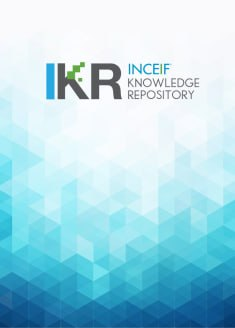
Chapter in Book
Browse Chapter in Book by Subject "Asia"
Results Per Page
Sort Options
- PublicationIslamic finance in South Asian Association for Regional Cooperation (SAARC) CountriesM. Kabir Hassan; Ismail Mohamed; Shadman Shakib; Muath Mubarak; Aishath Muneeza; Paolo Biancone (Edward Elgar Publishing, 2024)
This chapter's goal is to introduce readers to the progress of Islamic finance in the SAARC member states of Afghanistan, Bangladesh, Bhutan, India, Maldives, Nepal, Pakistan, and Sri Lanka. This chapter shows that the eight countries' Islamic finance trends are distinct, as are their respective methods for advancing Islamic finance. In a nutshell, South Asia includes the most prominent and significant Islamic finance market reflecting the predominantly Muslim population in these countries. Noticeably, Pakistan, Bangladesh, Sri Lanka, and the Maldives have a presence in all three major Islamic commercial financial industries catering for Muslims in the countries in a dual financial system. As a significant challenge in India, the legislation prohibits banks to invest, and deposit based on profit-loss sharing which negates the risk-sharing nature of Islamic finance. While for the majority of the countries, the major challenges were a lack of skilled workforce in the field, lack of awareness, education among the public on Islamic finance, and active Islamic liquidity markets. For Afghanistan, Islamic financial development is at an infant stage mainly due to political instability where Islamic banks are only operated and there is no proper formation of an Islamic capital market (ICM) and takaful industry. Nevertheless, the Muslim population is extremely low, and the presence of Islamic finance is almost none in Nepal and Bhutan where a proper development of Islamic finance in these countries necessitates huge efforts shall be made by the Islamic bodies and Muslims in the country.
- PublicationThe role of multilateral organizations in the development of Islamic finance in AsiaPriyesta Rizkiningsih; Cindhi Cintokowati; Randi Swandaru; Aishath Muneeza; M. Kabir Hassan (Edward Elgar Publishing, 2024)
Islamic finance rose significantly after World War II, with the independence of many Muslim populated countries in Asia and Africa. The trajectory started with a pilot project called Mit Ghamr Bank in Egypt in 1963, followed by Dubai Islamic Bank's enactment in 1975. Noticing the potential of Islamic finance, many multilateral organizations now embrace Islamic finance to achieve shared goals. The emerging Islamic financial institutions and their increasing financing volume have triggered significant awareness for the Muslim community to develop standards for Shari'ah transactions, governance, ethics, and many more. Thus, several multilateral organizations have emerged to shape a sound Islamic financial system and aim for wider prosperity and justice.
Abstract View
2670371
View & Download
189783
